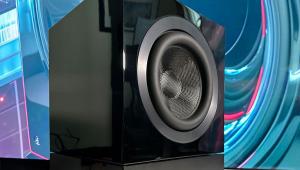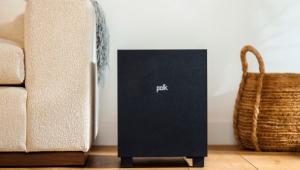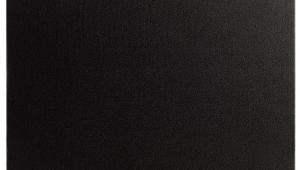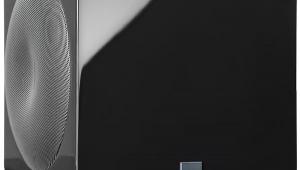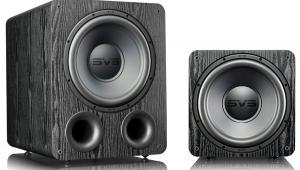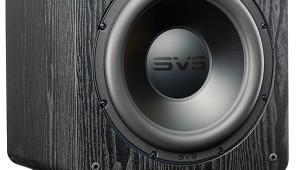GoldenEar ForceField 40 Subwoofer Review
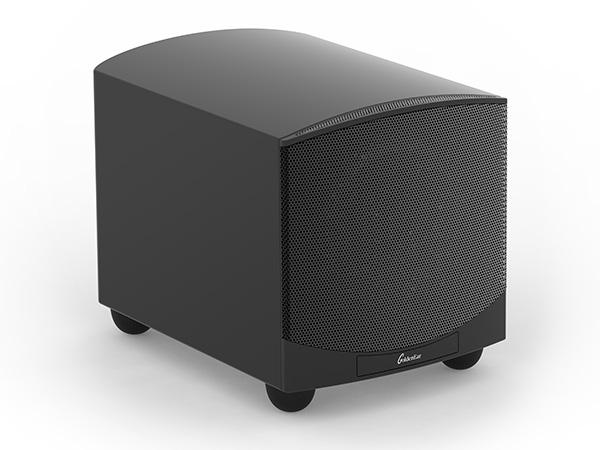
AT A GLANCE
Plus
Compact design
Plenty of output above 35 Hertz
Very musical
Minus
Tepid output below 27 Hz
Limited controls and no app support
THE VERDICT If music is your main passion, you'll love what the ForceField 40 brings to the table, but movie lovers searching for foundation-shaking bass may want to look elsewhere.
As longtime readers of Sound & Vision know, I have a passion for bass. Some might say I need to seek professional help in this regard—well, at least that's what my wife tells me! I've reviewed products for nearly 20 years and had dozens of subwoofers in and out of my theater during that time, and I am generally easy to please. Surprisingly, in all that time, I've never had the pleasure of reviewing anything from GoldenEar, even though the company boasts a broad line of loudspeakers and subwoofers. Well, the time has finally come.
Just the Facts
When it comes to subwoofers, GoldenEar has two levels of products. The premium offering is its SuperSub Series, plus the more budget-friendly ForceField subs. Here I'm looking at the ForceField 40, which features a front-mounted 10-inch driver coupled to a downward-firing 11 x 13-7/8-inch quadratic planar (i.e., rectangular and flat) passive radiator. I've seen a similar design in the past year from a Definitive Technology DN15 subwoofer (Gross was a founder of Definitive Technology back in 1990).
.jpg)
The active driver/passive radiator design dates back to 1935, when Harry Olson invented it. The physics involved are simple to understand, with the active driver moving the air within the enclosure. This air pressure fluctuation causes the passive radiator to move, leading to reduced motion (damping) of the main driver at the tuned frequency. This design has three advantages. First, it flattens the frequency response. Second, it creates a larger bass response from a small enclosure. Third, the engineering of the subwoofer is simplified because it doesn't require the complex mathematics used in designing a ported subwoofer.
The ForceField 40's specs could be more clear, but the company was able to give me more detailed information about the amplifier. While the documentation states that the amp is a 1200-watt force-field digital amplifier, this is only the peak output, with the actual RMS at 500 watts.
With dimensions of 13.3 x 18.3 x 14.7 inches (W x D x H), the ForceField 40 easily fits into the compact category of subwoofers. This means the WAF (wife acceptance factor) is very high, and room placement is a tad easier versus some of the more mammoth subwoofers on the market. I can attest that my wife liked the size, and so did my back—it only weighs about 40 pounds, so moving it around the room was a breeze.
Controls on the subwoofer are limited and include a Subwoofer Level (volume), Lowpass Crossover, Left/Right RCA inputs, and a toggle switch for whether you are using both the Left/Right inputs or the LFE in (Left RCA input). If you choose to have your AVR or Pre/Pro handle the bass management, select the LFE toggle, and the internal crossover setting is bypassed. For this review, I turned on the bypass and let my Trinnov Altitude 16 handle it using an internal 80 Hz crossover point.
.jpg)
There are some features that were missing. There is no phase setting on the sub, and its absence could create issues when setting it up with your main speakers or with a second subwoofer (but if you use room correction with bass management, then this is not a problem). Nor is there any Bluetooth or IR/RF connection with the subwoofer—all control adjustments need to be done manually. Also, I would have loved to have a choice between a couple of different EQ curves for the output—one suited for music emphasizing the mid-bass and the other for movies, which would give a boost to sub-30 Hz output. At this price point, features such as these are becoming much more common.



